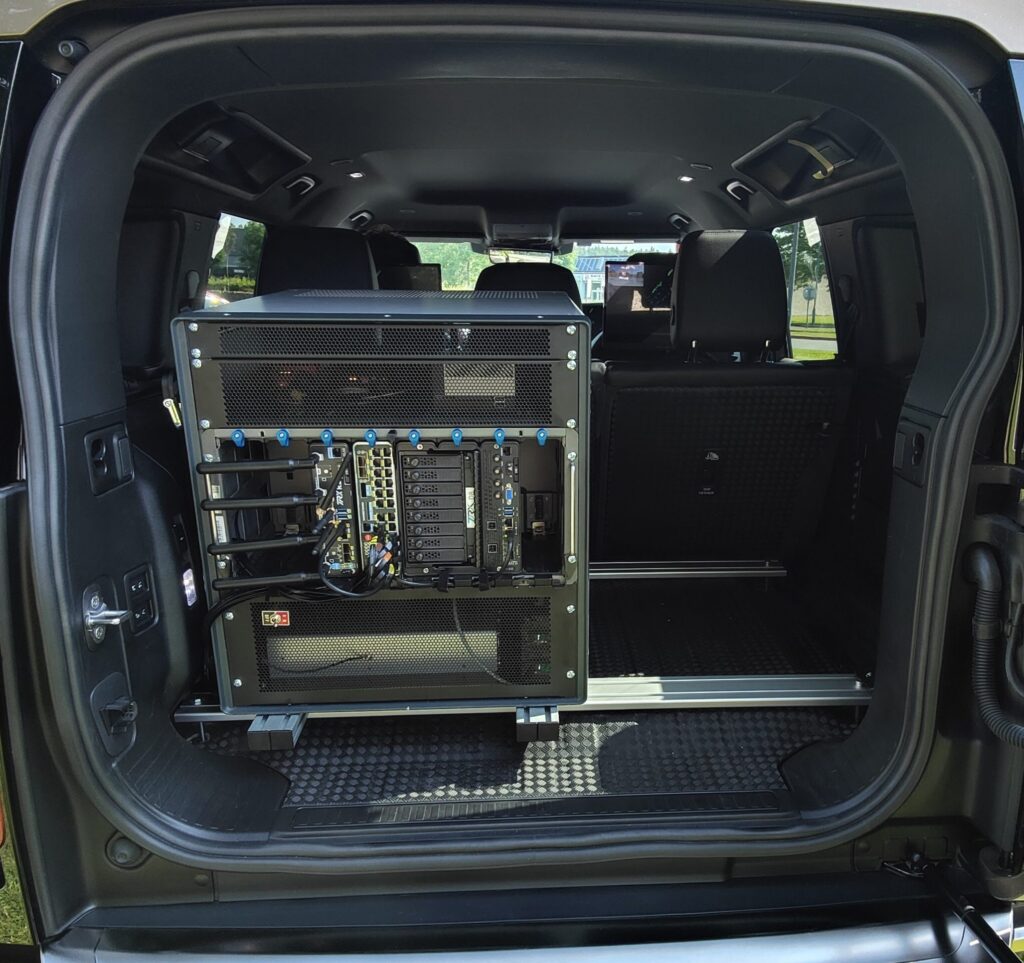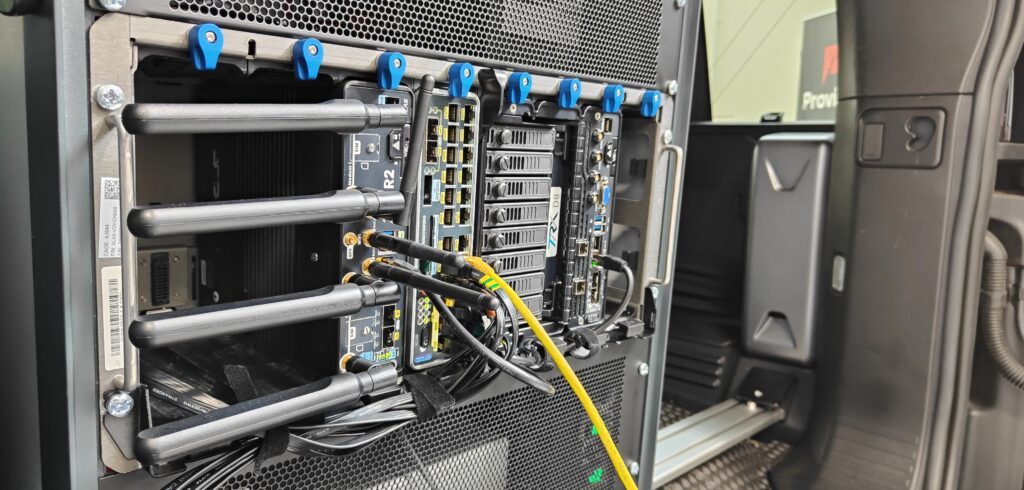A number of Future Mobility Campus Ireland (FMCI) partner companies are showcasing live demonstrations of their technologies on a testbed vehicle at this week’s ADAS & Autonomous Vehicle Testing Expo in Stuttgart. The Jaguar Land Rover, part of a fleet at FMCI’s Shannon facility, is fitted with a suite of ADAS solutions developed by AEye, Klas and Provizio.
The three companies have been working together at FMCI, an open collaborative testbed in the Shannon Free Zone. FMCI provides the facilities and expertise to harness valuable sensor data in a variety of road environments and traffic scenarios for new technologies. Fully accessible and controlled via a dedicated control center, the FMCI test facility includes a road network that is retrofitted with interconnected, state-of-the-art sensing and telecommunication technologies.
The testbed vehicle on display at Klas Group’s booth features Continental’s HRL131 long-range lidar. Based on AEye’s patented 4Sight architecture, the integrated forward-facing lidar combines long range and high-resolution performance over a wide field-of-view, with situational software reconfigurability for critical safety use cases. As AEye explained at the show, its product can adapt to any application, including high-speed highway environments, low-speed traffic jams and congested urban settings, using software-enabled performance modes. The HRL131 also enables OEMs to deliver new ADAS features over the air, futureproofing safety development and enabling additional revenue streams.

Klas develops and delivers rugged edge communications infrastructure alongside edge computing server solutions to securely extend the cloud to the harshest environments on Earth. Incorporated in the testbed is the TRX range of modules for ADAS/AD development from Klas, which includes vehicle datalogging, networking and connectivity, packaged up as a RAVEN (Rugged Autonomous Vehicle Network) platform with in-built power distribution powered by the vehicle’s 12V DC supply.
The TRX D8 datalogging solution from Klas captures, processes and stores data from vehicle vision systems, which is vital for further advancing safer driving experiences. The TRX R2, a compute cellular gateway, feeds GPS coordinates into the test platform and facilitates secure remote access to the vehicle over multiple mobile network connections.
Provizio’s 5D Perception driving platform is also installed on the testbed. The system uses a five-dimensional perception system that can continually see, track and interpret road conditions and hazards, giving every vehicle 360° insight into all weather conditions, far beyond human abilities. The company says a proprietary software-defined radar delivers 30x resolution and 3x range of next-gen incumbent radar sensors, without additional expensive radar channels. Software-defined sensors use integrated edge processors to make instant decisions on the chip, slashing response times.
Speaking at ADAS Stuttgart, Andreas Prinz, AEye technical sales director, Europe, commented: “As auto makers make the shift toward electrification, automation and service-based business models, they will increasingly look to software-definable sensing solutions with the ability to update and adapt depending on the needs of the system. Smart sensors like the Continental/AEye HRL131 adaptive lidar and Provizio’s high-definition radar can achieve high performance metrics in a wide variety of real-world environments and use cases, and will be key to enabling autonomous mobility.”
“Building out a toolchain to validate the performance of the next generation of Level 2+ ADAS functionality and sensors is cumbersome and time-consuming,” added Frank Murray, CTO of Klas. “The case in point of this initiative demonstrates the ease with which our partners could build out the validation and verification toolchain in-vehicle. Further proof of why to adopt a modular approach to in-vehicle toolchains is adaptability. Here, the team can quickly adapt the platform to log only data or to also include secure mobile connectivity, which simplifies the integration of the testbed with the end customer’s software development environment.”
Find out more at Booth 6628.



